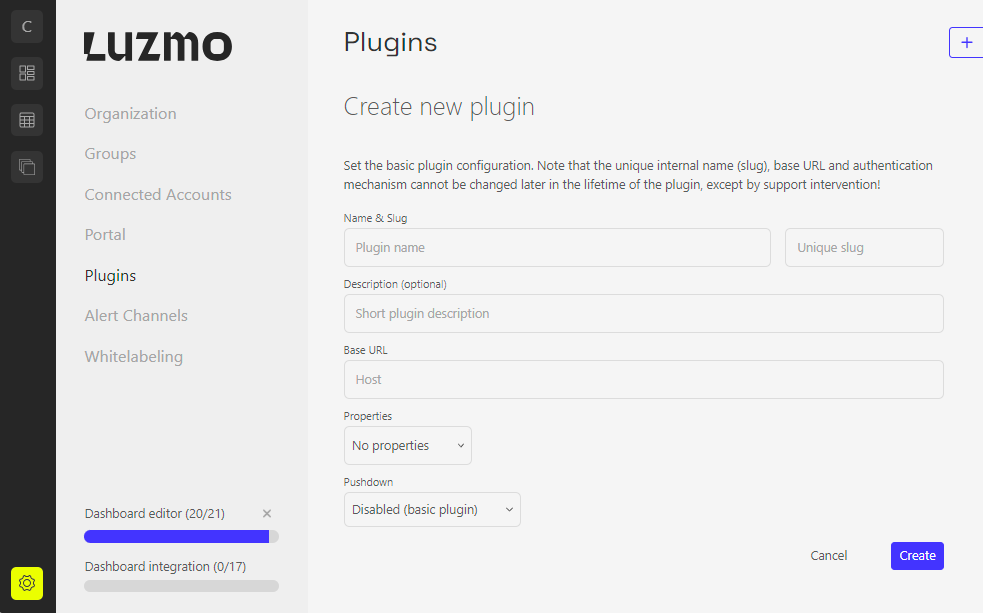Registering your plugin
When connecting your data through a plugin to Luzmo, you need to let Luzmo know where your plugin is hosted and which type of plugin you have.
To do so, you will firstly need an account on Luzmo with plugin features (the free trial account has full access). If you are already using Luzmo, check in your profile section to verify you have access to the plugin functionality. All current plans as of startup include plugin access.
To register your plugin, go to the Plugins page in your settings and click 'Create Plugin'. Alternatively, you can register a plugin via the Core API. For this article we're going to stick to the UI though. So to begin create a new plugin and set the basic plugin configuration:

| Property | Description |
|---|---|
| Plugin name | This is the name which will be shown on the "add datasets" pop-up modal. Choose a name that will be clear for the users of the plugin. |
| Slug | This is a unique internal name which identifies your plugin. A slug must be unique across Luzmo and can only contain lowercase alphanumeric characters. |
| Description | A description of your Plugin, as shown in the Luzmo UI |
| Base URL | Base URL of your Plugin that is used to construct /datasets, /query, ... endpoints. This URL must be reachable by Luzmo (publically routable). To safeguard our customers, your Plugin must be called over HTTPS. Your base URL should not end with /! The endpoints that will be called are: base_url/datasets, base_url/query, etc. |
| Authentication | Authorization method, read the article about authentication for more information on authentication modes. |
| Pushdown | turn this toggle on if you want to create a pushdown plugin, leave it turned off if you want to create a basic plugin. This article explains the difference between a basic and pushdown plugin. |
Once you have created your plugin, you will arrive at the plugin settings menu. Here you can set a picture for your plugin. You also get the option to set a URL and a license property. These specify a URL where more information about your product can be found and a license under which end users can use, re-use, modify or publish data exposed by your plugin.
Last but not least you can also edit the visibility:
- Personal (only you): only you will be able to select the plugin from the "add datasets" modal
- Organization: all users of your organization will be able to select the plugin from the "add datasets" popup modal
- All Luzmo users: all Luzmo users (also outside your organization) will be able to select the plugin from the "add datasets" popup modal. This does require your plugin to be reviewed by the Luzmo team first.